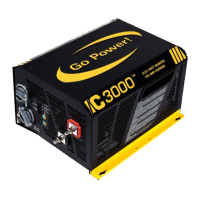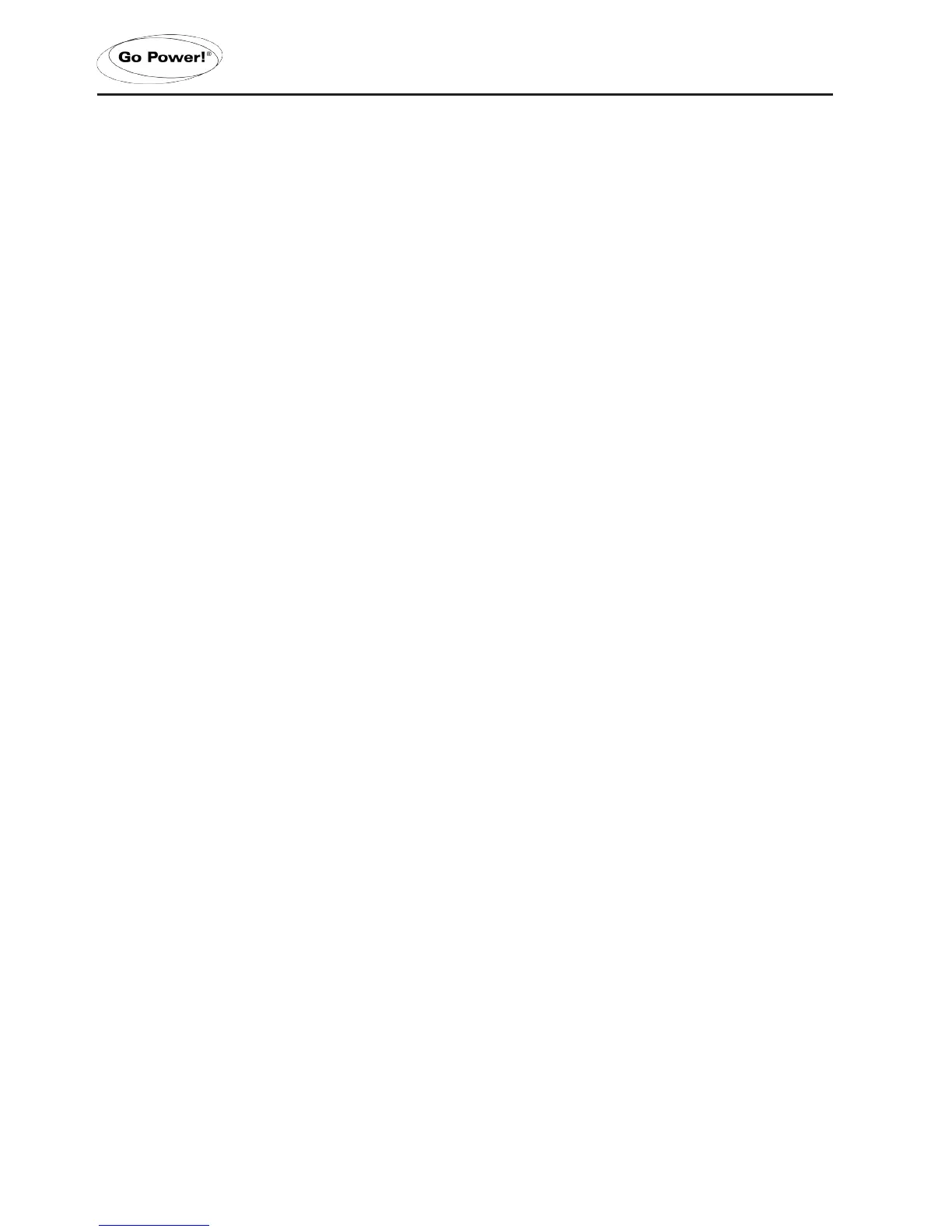[page 46] | gpelectric.com
OPERATION
4.9 IC SERIES FAULT CONDITIONS
The IC Series is protected against fault conditions and in normal use it will be rare to see any. If a fault condition does occur,
the Inverter/Charger will shut down as a safety measure to protect itself, the battery bank, and the AC loads. The following fault
conditions could be the cause of Inverter/Charger shut down:
LOW BATTERY -TheICSerieswillshutowheneverthebatterybankvoltagefallstotheLowBatteryCutOut(LBCO)levelto
protectthebatteriesfrombeingover-discharged.WhentheInverter/ChargerhasreachedtheLBCOandturnedo,theunitwill
automatically restart when AC shore power is supplied to the AC Input and the battery bank voltage rises above the Low Battery
Cut In (LBCI) 12.5 VDC level.
HIGH BATTERY -TheICSerieswillshutowheneverthebatterybankvoltageapproachestheHighBatteryCutOut(HBCO)
level, the Inverter/Charger will automatically shut down to prevent unregulated AC output voltage being supplied to the AC loads.
The unit will automatically restart when the battery bank voltage falls below the High Battery Cut In (HBCI) 14.5 VDC level.
OVER TEMPERATURE - The IC Series monitors the temperature of several key components within the Inverter/Charger. If
these components begin to exceed their safe operating temperature level, the unit will shut down to protect itself. The unit will
automatically restart after the unit cools down.
OVERLOAD - When the IC Series is in inverting or AC pass-through mode, the Inverter/Charger monitors the current levels. In
the event of a short circuit or an overload condition the unit will shut down. To start operating after this fault, the Inverter/Charger
mustbeturnedonusingtheon/oswitchontheunitorremotecontroloncetheACloadsarereduced/removed.
INTERNAL FAULT - The IC Series continues to monitor several internal components. If a condition occurs that does not allow
normal operation the Inverter/Charger will shut down to protect itself, the battery bank, and the AC loads. To start operating after
thisfault,theInverter/Chargermustbeturnedonusingtheon/oswitchontheunitorremotecontrol.
4.10 MAINTENANCE AND TROUBLESHOOTING
The IC Series is designed to be service-free. Even though there are no user serviceable parts, it is recommended that every
6 months you perform the following maintenance steps to ensure optimum performance and extend the life of your batteries:
• Visually inspect the batteries for cracks, leaks, or swelling—replace if necessary.
• Use baking soda to clean and remove any electrolyte spills or buildups.
• Check and tighten all battery terminal connections.
• Checkandllbatterywaterlevelsinoodedleadacidbatteries.
• Checkindividualbatteryvoltages(loadtestthosethathaveavoltagedierenceofmorethan0.3VDCfromeach
other) and replace if necessary.
• Check the Inverter/Charger’s ventilation vents—clean if necessary.
•
Visually inspect all cables in both the DC and AC systems. Check for wear/abrasion. Replace if necessary and
ensure strain reliefs and cable protection is installed to prevent future damage.
• Check and tighten the Inverter/Charger’s AC terminal block connections.
• Check the ground connections are secure on the Inverter/Charger, battery bank, main/sub panels and the earth
ground on the RV, or boat.
• Check the battery sensor is still securely attached to the battery bank.

